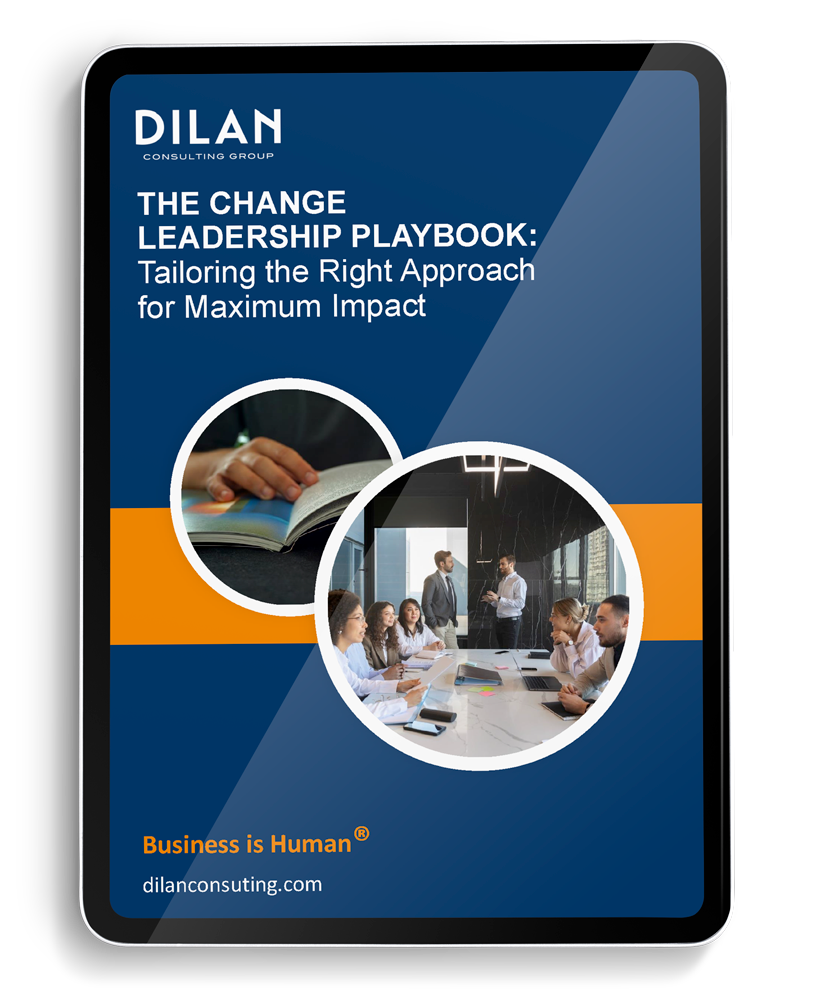Let us immediately clear up a common misconception: people do not resist change. Instead, they resist the potential for loss, exclusion, uncertainty, and a lack of control over their circumstances. The belief that humans are inherently resistant to change is a misleading oversimplification. This myth often causes organizations to approach change initiatives incorrectly, leading to frustration and failure.
In reality, humans are naturally adaptive. Our survival as a species depends on our ability to evolve, innovate, and adjust to new environments. What people push back against is not the act of change but the perception that it threatens their security, expertise, or autonomy. By understanding these deeper concerns, leaders can shift their approach and implement change in a way people willingly embrace.
Understanding the Root Causes of Resistance
Harvard Business School professor Rosabeth Moss Kanter explains, “Change interferes with autonomy and can make people feel that they have lost control over their territory” (Harvard Business Review, 2012). When employees feel excluded from the decision-making process or uncertain about the future, they react with resistance—not out of stubbornness, but as a protective response to potential harm.
Research in psychology reinforces this view. Samuelson and Zeckhauser (1988) found that resistance to change often stems from a perceived loss of something valuable—status, familiarity, control—rather than change itself. People fear ambiguity, and resistance becomes more pungent when organizations fail to provide clarity.
Additionally, neuroscience research highlights that the brain perceives uncertainty as a threat, activating the amygdala and triggering a fight-or-flight response (Rock, 2009). Leaders who fail to acknowledge and address uncertainty may unintentionally increase employee resistance.
How to Lead Change Effectively: Inclusion, Agency, and Vision
Since resistance is primarily about managing and communicating change, organizations must take a human-centered approach to transformation. The key to success lies in fostering inclusion, ensuring employees have agency, and communicating a compelling vision.
McKinsey & Company’s research on organizational transformations underscores this point. Their studies show that organizations that involve employees early and meaningfully in the change process achieve an 81% higher success rate than those that rely on top-down directives (Skerritt et al., 2024). Employees who feel valued and engaged in shaping the future are more likely to commit to making the change work.
Strategies to Help People Embrace Change
Drawing from research and real-world experience in organizational change, here are six proven strategies to turn resistance into engagement:
- Involve People Early and Meaningfully
Organizations must engage employees from the start. Leaders should create opportunities for employees to articulate their concerns, contribute ideas, and co-design solutions. Collaborative workshops, surveys, and open forums foster a sense of ownership. When employees feel heard and respected, their willingness to support change increases.
- Provide a Clear Vision and Communicate Transparently
Ambiguity fuels anxiety. Leaders must clearly define the change’s purpose, goals, and expected benefits. Research from Kotter (2012) highlights that employees who understand why a change is happening are significantly more likely to support it. Leaders should regularly update employees, address concerns, and be honest about challenges to build trust and alignment.
- Break the Change into Manageable Steps
Large-scale change can feel overwhelming, even to those open to it. Breaking down initiatives into smaller, achievable steps makes the process feel less daunting. The “progress principle,” developed by Amabile and Kramer (2011), demonstrates that celebrating small wins boosts motivation and engagement. Employees are more likely to embrace change when they can see tangible Progress.
- Develop Necessary Skills to Build Confidence
A common reason for resistance is fear of incompetence in a new environment. Leaders can mitigate this fear by investing in upskilling initiatives, mentorship programs, and hands-on training. Deloitte’s Human Capital Trends Report (2020) found that organizations prioritizing continuous learning are more successful in reducing resistance and accelerating transformation.
- Pilot Programs to Test and Learn
Organizations should launch small-scale pilot programs before implementing change across the entire Company. Pilots provide opportunities to test new ideas, gather feedback, and make necessary adjustments. Seeing early successes can reduce skepticism and help hesitant stakeholders feel more comfortable with the transition.
- Recognize and Celebrate Progress
Acknowledging milestones—big or small—reinforces momentum and motivation. Recognition does not have to be elaborate; a simple expression of appreciation from leadership can go a long way in maintaining enthusiasm. Research shows that when employees feel valued, they are more likely to support and sustain organizational change (Prosci, 2021).
Leading Change with Empathy and Collaboration
The fundamental truth remains: people do not resist change itself. They resist loss, exclusion, and uncertainty. Organizations that understand these underlying concerns and address them with empathy, inclusion, and clear communication create a culture where employees adapt and thrive in times of transition.
Organizations can transform resistance into engagement by shifting from a rigid, top-down approach to an inclusive and transparent one. When managed well, change becomes an opportunity for growth rather than a source of conflict.
Ready to transform resistance into results? DILAN Consulting Group specializes in change management strategies that empower leaders and organizations to navigate transitions successfully. Contact us today to learn how we can help your team embrace change with Confidence.
References
Amabile, T., & Kramer, S. (2011). The progress principle: Using small wins to ignite work joy, engagement, and creativity. Harvard Business Review Press.
Deloitte. (2020). Human Capital Trends Report. Deloitte Insights.
Harvard Business Review. (2012). Ten reasons people resist change.
Kotter, J. P. (2012). Leading change. Harvard Business School Press.
Prosci. (2021). ADKAR change model: A model for change in business, government, and community.
Rock, D. (2009). Your brain at work: Strategies for overcoming distraction, regaining focus, and working smarter all day long. Harper Business.
Samuelson, W., & Zeckhauser, R. (1988). Status quo bias in decision making. Journal of Experimental Social Psychology, 59(1), 33-57.
Skerritt, D., Parsons, J., Stewart, M. L., Schrimper, M., & Rainone, N. (2024, September 6). Going all in: Why employee ‘will’ can make or break transformations. McKinsey & Company.









